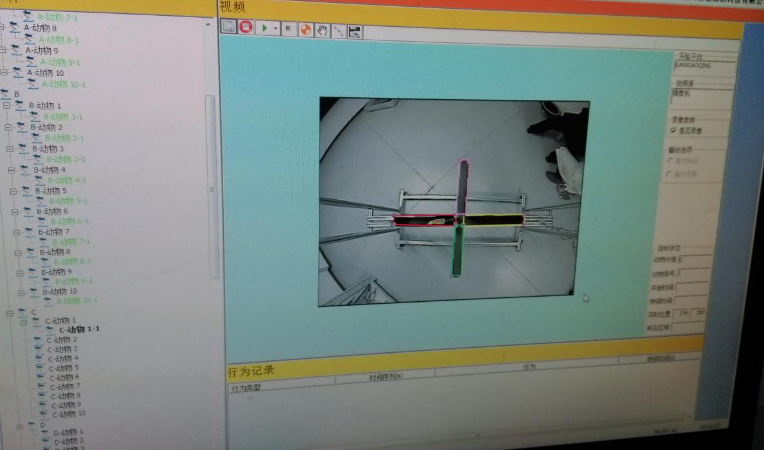Mouse Model for Anxiety
- Product No.DSI542Mu01
- Organism SpeciesMus musculus (Mouse) Same name, Different species.
- Prototype SpeciesStudy animal’s animal anxiety by elevated plus maze(EPM)
- Sourcen/a
- Model Animal StrainsICR mice(SPF), healthy, male, age:8w, bodyweight:(25±2)g.
- Modeling GroupingICR mice were randomly divided into A: control group , 20 rats in group a B: component extraction of traditional Chinese medicine, C: positive drug group (diazepam group), 20 mice in each group.
- Modeling Period8d
- Modeling MethodThe elevated plus maze(EPM) is the anxiety of exploring characteristics in the new environment and open arms hanging on the use of animal fear form a conflict to study animal behavior.
The two component plus maze relatively open arm and two arm relatively closed and connected to the central region, the use of advanced medical organic material plate, the contact surface not reflective, can clean the odor of alcohol use; Xeye animal behavior trajectory analysis system provides two kinds of tracking algorithm for the user: gray method and background subtraction, stable and reliable in the end of three, the head tracking algorithm, can even identify tiny biological larvae.
Step:
1.The mice were fed in cages, the feed supply was adequate, free drinking, and the room temperature was 25 ℃.
2. ICR mice were randomly divided into 3 groups, 20 mice in each group, each drug administered with the corresponding dose of the blank control group was given the same volume of distilled water everyday, morning and afternoon time, continuous intragastric administration for 7d. The volume of intragastric administration was 200ul/each one/time, and then fasted at 8 h before the last administration.
3. At 8th days in the morning to continue intragastric administration once, after intragastric administration of 40min elevated plus maze test. The mice were placed in a maze from the central to the closed arm to record the activity of the mice within 5 min. The observed indexes include the number of times of entering the open arm, the time of the open arm, the number of times of entering the closed arm, and the time of closing the arm. Record and calculate the ratio of the number of open arms (the ratio of the sum of the number of open arms and closed arms), the ratio of the open arm retention time (to the sum of the sum of the open arms and the closed arm residence time). After completion of the experiment the mice will clean up arms, spraying alcohol to remove odor. - ApplicationsEPM is widely used in drug development / screening / evaluation, pharmacology, toxicology, preventive medicine, neurobiology, animal psychology and behavioral biology and other disciplines of scienc
- Downloadn/a
- UOM Each case
- FOB
US$ 116
For more details, please contact local distributors!
Model Evaluation
The elevated plus maze with a pair of open arms and a pair of closed arm, rodent animal as addicted to dark will tend to in the closed arms, but out of curiosity and exploration will be in open arms, in the face of novelty, and animal impulse and fear of inquiry, which made inquiry and conflict avoidance, resulting in anxiety. The anti anxiety drugs can significantly increase the number of times into the arm and the time, the cross maze from the ground is higher, the equivalent of people standing on the cliff, so that the object of fear and anxiety.
There was a negative correlation between the number of open arms and the duration of stay, and the anxiety of the rats. The shorter the time to enter the open arms, the shorter the time to stay, which showed that the anxiety of mice was more serious.
Pathological Results
Cytokines Level
Statistical Analysis
SPSS software is used for statistical analysis, measurement data to mean ± standard deviation (x ±s), using t test and single factor analysis of variance for group comparison, P<0.05 indicates there was a significant difference, P<0.01 indicates there are very significant differences.
GIVEAWAYS
INCREMENT SERVICES
-
 Tissue/Sections Customized Service
Tissue/Sections Customized Service
-
 Serums Customized Service
Serums Customized Service
-
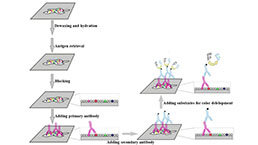 Immunohistochemistry (IHC) Experiment Service
Immunohistochemistry (IHC) Experiment Service
-
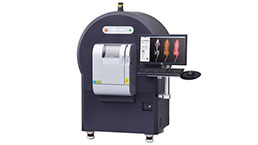 Small Animal Micro CT Imaging Experiment Service
Small Animal Micro CT Imaging Experiment Service
-
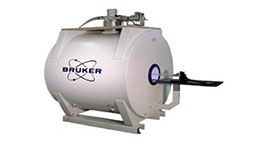 Small Animal MRI Imaging Experiment Service
Small Animal MRI Imaging Experiment Service
-
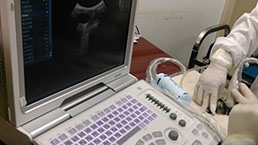 Small Animal Ultrasound Imaging Experiment Service
Small Animal Ultrasound Imaging Experiment Service
-
 Transmission Electron Microscopy (TEM) Experiment Service
Transmission Electron Microscopy (TEM) Experiment Service
-
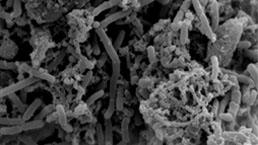 Scanning Electron Microscope (SEM) Experiment Service
Scanning Electron Microscope (SEM) Experiment Service
-
 Learning and Memory Behavioral Experiment Service
Learning and Memory Behavioral Experiment Service
-
 Anxiety and Depression Behavioral Experiment Service
Anxiety and Depression Behavioral Experiment Service
-
 Drug Addiction Behavioral Experiment Service
Drug Addiction Behavioral Experiment Service
-
 Pain Behavioral Experiment Service
Pain Behavioral Experiment Service
-
 Neuropsychiatric Disorder Behavioral Experiment Service
Neuropsychiatric Disorder Behavioral Experiment Service
-
 Fatigue Behavioral Experiment Service
Fatigue Behavioral Experiment Service
-
 Nitric Oxide Assay Kit (A012)
Nitric Oxide Assay Kit (A012)
-
 Nitric Oxide Assay Kit (A013-2)
Nitric Oxide Assay Kit (A013-2)
-
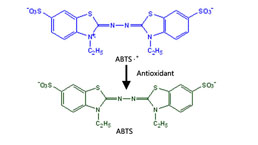 Total Anti-Oxidative Capability Assay Kit(A015-2)
Total Anti-Oxidative Capability Assay Kit(A015-2)
-
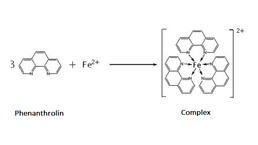 Total Anti-Oxidative Capability Assay Kit (A015-1)
Total Anti-Oxidative Capability Assay Kit (A015-1)
-
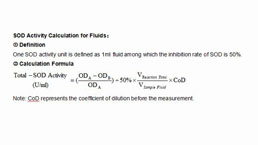 Superoxide Dismutase Assay Kit
Superoxide Dismutase Assay Kit
-
 Fructose Assay Kit (A085)
Fructose Assay Kit (A085)
-
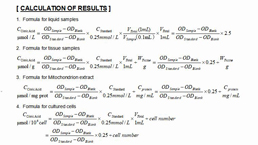 Citric Acid Assay Kit (A128 )
Citric Acid Assay Kit (A128 )
-
 Catalase Assay Kit
Catalase Assay Kit
-
 Malondialdehyde Assay Kit
Malondialdehyde Assay Kit
-
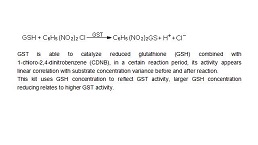 Glutathione S-Transferase Assay Kit
Glutathione S-Transferase Assay Kit
-
 Microscale Reduced Glutathione assay kit
Microscale Reduced Glutathione assay kit
-
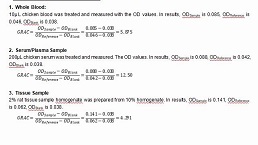 Glutathione Reductase Activity Coefficient Assay Kit
Glutathione Reductase Activity Coefficient Assay Kit
-
 Angiotensin Converting Enzyme Kit
Angiotensin Converting Enzyme Kit
-
 Glutathione Peroxidase (GSH-PX) Assay Kit
Glutathione Peroxidase (GSH-PX) Assay Kit
-
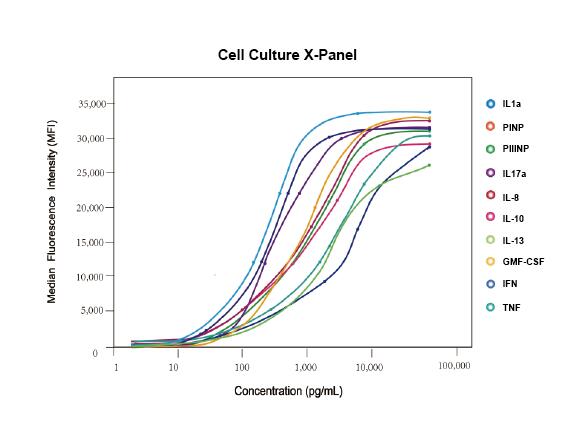 Cloud-Clone Multiplex assay kits
Cloud-Clone Multiplex assay kits
| Catalog No. | Related products for research use of Mus musculus (Mouse) Organism species | Applications (RESEARCH USE ONLY!) |
| DSI542Mu01 | Mouse Model for Anxiety | EPM is widely used in drug development / screening / evaluation, pharmacology, toxicology, preventive medicine, neurobiology, animal psychology and behavioral biology and other disciplines of scienc |


